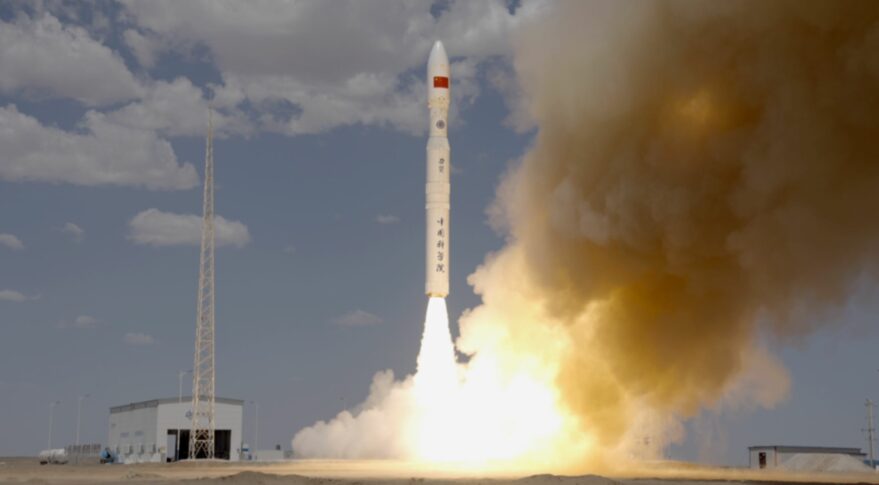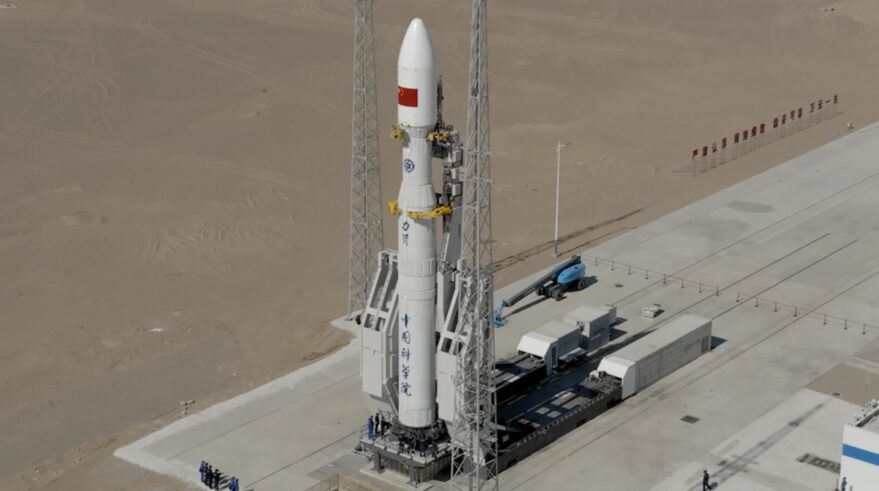
CAS Space puts six satellites in orbit with first orbital launch (Image Credit: Space News)
HELSINKI — Chinese launch services provider CAS Space successfully placed six small satellites in orbit early Wednesday with the first launch of the Lijian-1 solid rocket.
The four-stage Lijian-1 (ZK-1A) rocket lifted off from an erector-launcher at the Jiuquan Satellite Launch Center at 12:12 a.m. Eastern. Launch success was confirmed by China’s official space publication within an hour of liftoff.
The rocket had a take-off weight of 135 tons, a total length of 30 meters, a core stage diameter of 2.65 meters, a fairing diameter of 2.65 meters and can carry 1,500 kilogram of payload into a 500-kilometer sun-synchronous orbit, according to the Chinese Academy of Sciences.
The six satellites, some developed by the Innovation Academy for Microsatellites under the Chinese Academy of Sciences, were described vaguely for conducting research in space technology, atmospheric density measurements, quantum key distribution experiments and electromagnetic tests, according to Chinese state media.
The Nanyue Science Satellite, developed by SASTSpace, under the state-owned Shanghai Academy of Spaceflight Technology (SAST), will be used for science popularization. It also carries a GNSS-R payload, detecting reflected signals from Beidou and GPS satellites to make soil moisture measurements. It also carries an ion propulsion system developed by SAST’s 803rd research institute.
The launch facilities include a horizontally retractable cover and an erector-launcher, orbital images reveal.
High resolution satellite imagery of LP-43/130 at the Jiuquan Satellite Launch Center in China taken on 2022-06-09 shows what looks to be the Zhongke-1A rocket standing in a vertical position. pic.twitter.com/huVEkhqVhn
— Harry Stranger (@Harry__Stranger) June 19, 2022
The Lijian-1 is similar in capabilities to the Jielong-3 (Smart Dragon-3) rocket expected to launch in the coming months and developed by China Rocket, a spinoff from state-owned China Academy of Launch Vehicle Technology (CALT).
China’s state-owned and commercial space entities have been developing a range of solid rockets with varying capabilities in recent years, with the trend seen as an effort to boost the country’s overall space capabilities.
Lijian-1 is now the largest operational Chinese solid launcher and CAS Space is also developing larger rockets. Expace, a spinoff from state-owned missile-maker CASIC, is also working on a range of large solid rockets.

CAS Space is a commercial spinoff from the Chinese Academy of Sciences (CAS). The company raised $31 million in 2021 but leading investors were CITIC Juxin, ultimately owned by state-owned investment company CITIC Group Corporation, Zhongke Chuangxing, an accelerator fund set up by CAS, and Yuexiu Industrial Investment, another state-owned investment vehicle, operating in the Guangdong-Hong Kong-Macao Greater Bay Area.
The industrial base for CAS Space has been established in Nansha district in Guangzhou, capital of Guangdong province. Nansha states it aims to foster a complete industrial chain including rockets (upstream), satellites (midstream) and downstream applications. Space subsidiaries of carmaker Geely, including Geespace, Shanghe Aerospace and Xingkong Zhilian have also settled in Nansha.
Parent CAS develops a range of spacecraft, including Beidou satellites, and has previously launched sounding rockets, but Wednesday’s orbital launch marks a big step forward. Solid rockets appear to be only the start of CAS Space’s ambitions, however.
CAS Space is also working on reusable liquid engines with the goal of developing recoverable launchers. A new website unveiled by the company in recent days shows launch vehicle renders similar to Falcon 9, Falcon Heavy and New Shepard launchers.
Chinese launch services startup CAS Space (spun off from the Chinese Academy of Sciences) has a new website. Featuring its planned launchers, you can see tributes to the Falcon 9, Falcon Heavy and New Shepard. https://t.co/Ov7Ylm4Cuz pic.twitter.com/jHxXOPu8fB
— Andrew Jones (@AJ_FI) July 25, 2022
The suborbital reusable launcher is being developed for space tourism in a similar fashion to Blue Origin’s New Shepard, sending up to seven passengers on 10-minutes rides, briefly passing above the 100-kilometer-altitude Kármán line.
The company recently signed a deal with China Tourism Group to boost these efforts and a first test launch is planned for around 2024.








